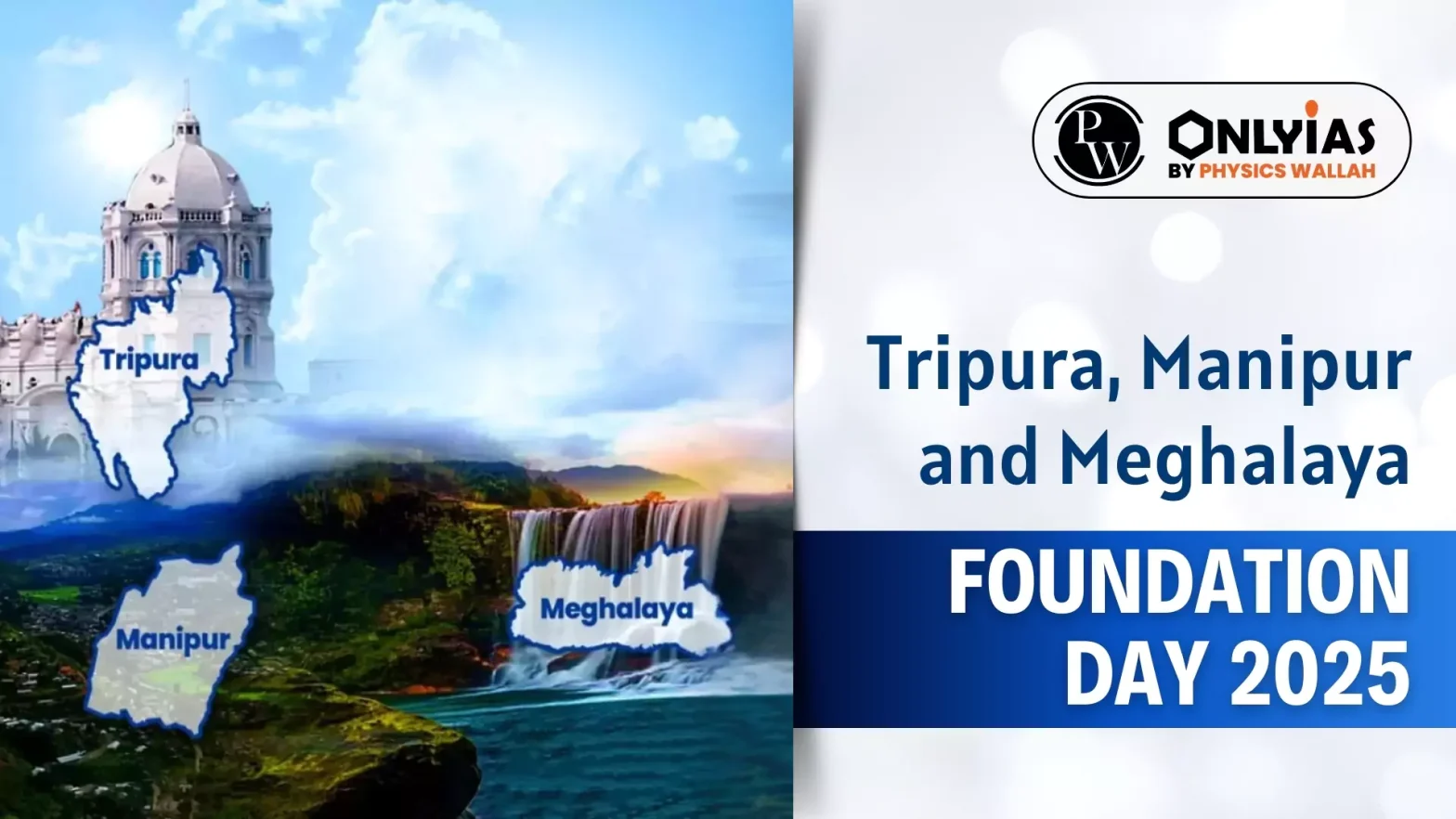
Tripura Manipur and Meghalaya Foundation Day: India is a country known for its cultural diversity and historical richness. Among the significant dates highlighting India’s journey towards unity and development is the 21st of January 1972, when Tripura, Manipur, and Meghalaya became full-fledged states under the North Eastern Areas Reorganisation Act, 1971. This day is commemorated as Tripura, Manipur and Meghalaya Foundation Day, which reflects the aspirations and identity of the people of these northeastern states.
The journey to statehood for Tripura, Manipur, and Meghalaya is deeply rooted in the reorganisation of India’s northeastern region during the early 1970s. The formation of Tripura, Manipur, and Meghalaya as states was a turning point in the reorganization of India’s northeastern region. At the time of independence, the northeastern landscape included the Assam plains, hill districts, and princely states like Manipur and Tripura,
The North Eastern Areas Reorganisation Act, 1971, passed by Parliament to address the region’s unique cultural, social, and administrative needs, laid the constitutional framework for this transformation.
The Tripura, Manipur, and Meghalaya Foundation Day 2025 will mark these northeastern states’ 53rd anniversary of statehood. The occasion will be celebrated with enthusiasm and pride, showcasing their cultural diversity and achievements since their inception.
Each state organizes cultural programs, parades, and public gatherings, emphasizing its unique traditions and contributions to the nation.
| Tripura Manipur and Meghalaya Foundation Day 2025 Overview | |
| Aspect | Details |
| Date | 21st January 2025 |
| Occasion | Commemoration of the day when Tripura, Manipur, and Meghalaya became full-fledged states. |
| Historical Context | Under the North Eastern Areas Reorganisation Act, 1971, the three states achieved statehood. |
| Manipur Statehood Year | 1972 |
| Tripura, Statehood Year | 1972 |
| Meghalaya Statehood Year | 1972 |
| Constitutional Amendment | States were formed under the 27th Constitutional Amendment Act. |
| Key Legislation | North Eastern Areas Reorganisation Act, 1971. |
| Pre-Statehood Status of Manipur | Union Territory (merged with India in 1949). |
| Pre-Statehood Status of Tripura, | Union Territory (merged with India in 1949). |
| Pre-Statehood Status of Meghalaya | Autonomous State within Assam (granted autonomy in 1969). |
| Cultural Highlights | Celebrations include traditional dances, music, and speeches reflecting the state’s heritage. |
| Significance in 2025 | Marks 53 years of statehood, highlighting development, unity, and cultural preservation. |
| Initiative Theme | Celebrated under Ek Bharat Shreshtha Bharat, emphasizing cultural exchange and integration. |
| Key Cities | Imphal (Manipur), Agartala (Tripura,), Shillong (Meghalaya). |
| Natural Highlights | Rich biodiversity, scenic landscapes, and cultural heritage unique to the northeastern region. |
Northeastern Areas Reorganisation Act, 1971 facilitated the creation of new states, marking a major restructuring in India’s northeastern territories. The Act granted full statehood to Manipur, Meghalaya, and Tripura, while preserving their cultural and administrative uniqueness.
This act provided for:
This reorganization reflected the central government’s commitment to promoting regional integration and development.
The Tripura, Manipur and Meghalaya Foundation Day 2025 holds special significance as it commemorates over five decades of these states’ contributions to India’s progress. The celebrations showcase their rich cultural heritage, promote national unity, and highlight the government’s initiatives under Ek Bharat Shreshtha Bharat, aimed at boosting inter-state cultural exchange.
Since their formation, Tripura, Manipur, and Meghalaya have made significant contributions to India in various fields:
Foundation Day events highlight the profound traditions, dances, and cuisines of these states, emphasizing the unique cultural richness of northeast India. The Tripura, Manipur and Meghalaya Foundation Day 2025 is also an occasion to reflect on the progress achieved in areas like education, infrastructure, and governance.
Despite their rich heritage and achievements, Tripura, Manipur, and Meghalaya face challenges such as connectivity issues, economic disparities, and the need for better infrastructure. However, with continued focus on development and regional integration, these states are positioned to become significant contributors to India’s progress.
The Tripura Manipur and Meghalaya Foundation Day is more than just a celebration of statehood; it is an example of India’s inclusive approach to development and unity in diversity. As we celebrate the Tripura, Manipur and Meghalaya Foundation Day 2025, we honour the resilience and spirit of the people of these states, whose contributions enrich India’s cultural and social fabric.
<div class="new-fform">
</div>
